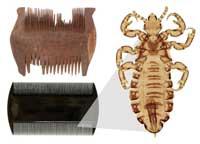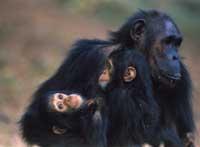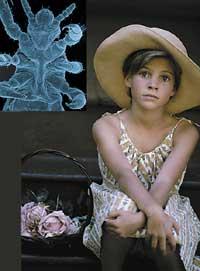Follow the footprint of the lice
2007/04/08 Rementeria Argote, Nagore - Elhuyar Zientziaren Komunikazioa

One might think that the best way to look at human evolution is to look at the traces and genes of one's human being. The meaning says so. But there are other ways, such as looking at the parasites that have led them when they have gone to their place for thousands of years, such as lice.
To say correctly, the human being is accompanied by three types of lice. The best known is that of the head, Pediculus humanus capitis, which has spread throughout the world and to all social levels, well known by parents with children of school. The Piojo Corporal, Pediculus humanus corporis, is of the same species as the previous one, but it is not so widespread, but it is found more in cold zones that change little clothes. And the third belongs to another species, the poladorría, the pubis.
Lice and, in general, most parasites are very specific. That is, these species of lice only infect man, like chimpanzees and gorillas, which have their own species of lice. It is assumed that the chimpanzee, the man and the gorilla, being formerly the same anchor, also the lice of that ancestor evolved to form the current lice species.
Asking the lice
But evolution is not simple, it is not a straight line. From an ancestor come out several lines, which approach and move away, branch more...

One way to better know this evolution is to compare the evolution of the hosteleros with that of the evolution of the lice to see if they overlap or not. This is done on the basis of specific genes, and of course, most of the time the evolutions coincide, like the chimpanzee and the species of lice (both of the genus Pediculus) that were separated at the same time when men were separated. It is logical, each lice continues to evolve separately, along with the corresponding inn.
But there are other discoveries. For example, the spine of the gorilla and the human slope are of the genus Phtantivirus. It is logical to think that the two species of lice also separated when the gorilla and the man separated. But no. However, they have discovered that the man took the piojo de potro from the gorilla. Although the gorilla and man were separated millions of years ago, the gorilla lice occupied the human being as a host, with which it evolved to become the current piece.
Therefore, at that time the gorilla and man had to have a close relationship, remain in the same place for a short period of time or touch each other. Lice remain little outside the warmth and protection of the host, so experts consider that the gorilla and man had a relationship, but to know what kind of relationship was something else.
However, it is not little information that the lice give us. It is a small insect and as annoying as setatía, but at all costs the researchers have benefited from that mushroom of living on behalf of man.
Published in 7K.

Gai honi buruzko eduki gehiago
Elhuyarrek garatutako teknologia






